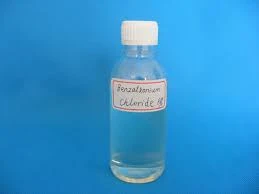Understanding Polyaluminum Chloride as an Effective Water Treatment Coagulant Solution
The Role of Poly aluminum Chloride Coagulant in Water Treatment
Water is an essential resource for life, and ensuring its purity and safety is crucial for public health and the environment. Among the various methods employed in water treatment, the use of coagulants plays a significant role in the clarification process. One such coagulant that has gained prominence in recent years is polyaluminum chloride (PAC). This article explores the nature of polyaluminum chloride, its applications in water treatment, and the advantages it offers over traditional coagulants.
What is Polyaluminum Chloride?
Polyaluminum chloride is a chemical compound that consists of aluminum ions and chloride ions, which forms a complex polymer structure. It is soluble in water and is available in both liquid and powdered forms. PAC is known for its high charge density, which allows it to effectively neutralize the charges of suspended particles in water, such as silt, clay, and organic matter, facilitating their aggregation and subsequent removal.
Applications in Water Treatment
Polyaluminum chloride is primarily used in the treatment of drinking water and wastewater. In drinking water treatment plants, PAC helps remove turbidity and organic contaminants, ensuring that the water meets health and safety standards. The process begins with the rapid mixing of PAC with raw water, followed by a flocculation phase where the aggregated particles form larger flocs. These flocs can be easily separated from the water through sedimentation or filtration.
In wastewater treatment, PAC is employed to enhance the removal of suspended solids and colloidal particles, improving the overall efficiency of the treatment process. It is particularly effective in treating industrial wastewater, which often contains a variety of contaminants that standard coagulants may struggle to remove.
Advantages of Using Polyaluminum Chloride
polyaluminum chloride coagulant

1. Higher Efficiency One of the most significant advantages of PAC is its higher coagulation efficiency compared to traditional aluminum sulfate (alum). Due to its high charge density, PAC can achieve effective coagulation at lower dosages, which not only reduces costs but also minimizes the amount of sludge generated during the treatment process.
2. Lower pH Dependency PAC operates effectively across a wider range of pH levels compared to conventional coagulants. This property allows for greater versatility in various water sources, making it suitable for treating both acidic and alkaline waters without significant adjustments.
3. Enhanced Settling Properties The flocs formed with PAC tend to settle faster and denser than those produced with traditional coagulants. This characteristic facilitates the removal of suspended solids and reduces the time required for sedimentation, leading to more efficient water treatment processes.
4. Reduced Alkalinity Consumption The use of PAC typically results in lower consumption of alkalinity—essential for the coagulation process—compared to traditional coagulants. This is especially beneficial in waters that are low in natural alkalinity, where the addition of excessive alkalizing agents can be detrimental.
5. Safer Handling and Storage PAC is relatively safer to handle compared to other coagulants like sulfuric acid, reducing the risks associated with storage and application. Its lower corrosiveness makes it easier for treatment facilities to manage.
6. Environmental Benefits The reduced sludge volume generated when using PAC translates to lower disposal costs and minimized environmental impact. Additionally, the improved water quality can contribute to better ecological outcomes in receiving bodies of water.
Conclusion
Polyaluminum chloride is revolutionizing water treatment processes across the globe. Its effectiveness, versatility, and environmental advantages make it an attractive option for both municipal and industrial applications. As water treatment technologies continue to evolve, the role of PAC as a coagulant will likely expand, playing a key part in providing safe, clean water for communities and protecting aquatic ecosystems. The adoption of PAC can be seen as a forward step in the quest for sustainable water management practices, fostering a healthier planet for future generations.
-
lk-319-special-scale-and-corrosion-inhibitor-for-steel-plants-advanced-solutions-for-industrial-water-systemsNewsAug.22,2025
-
flocculant-water-treatment-essential-chemical-solutions-for-purification-processesNewsAug.22,2025
-
isothiazolinones-versatile-microbial-control-agents-for-industrial-and-consumer-applicationsNewsAug.22,2025
-
scale-inhibitor-key-solutions-for-water-system-scale-preventionNewsAug.22,2025
-
organophosphonates-versatile-scale-inhibitors-for-industrial-water-systemsNewsAug.22,2025
-
scale-and-corrosion-inhibitor-essential-chemical-solutions-for-water-system-maintenanceNewsAug.22,2025





